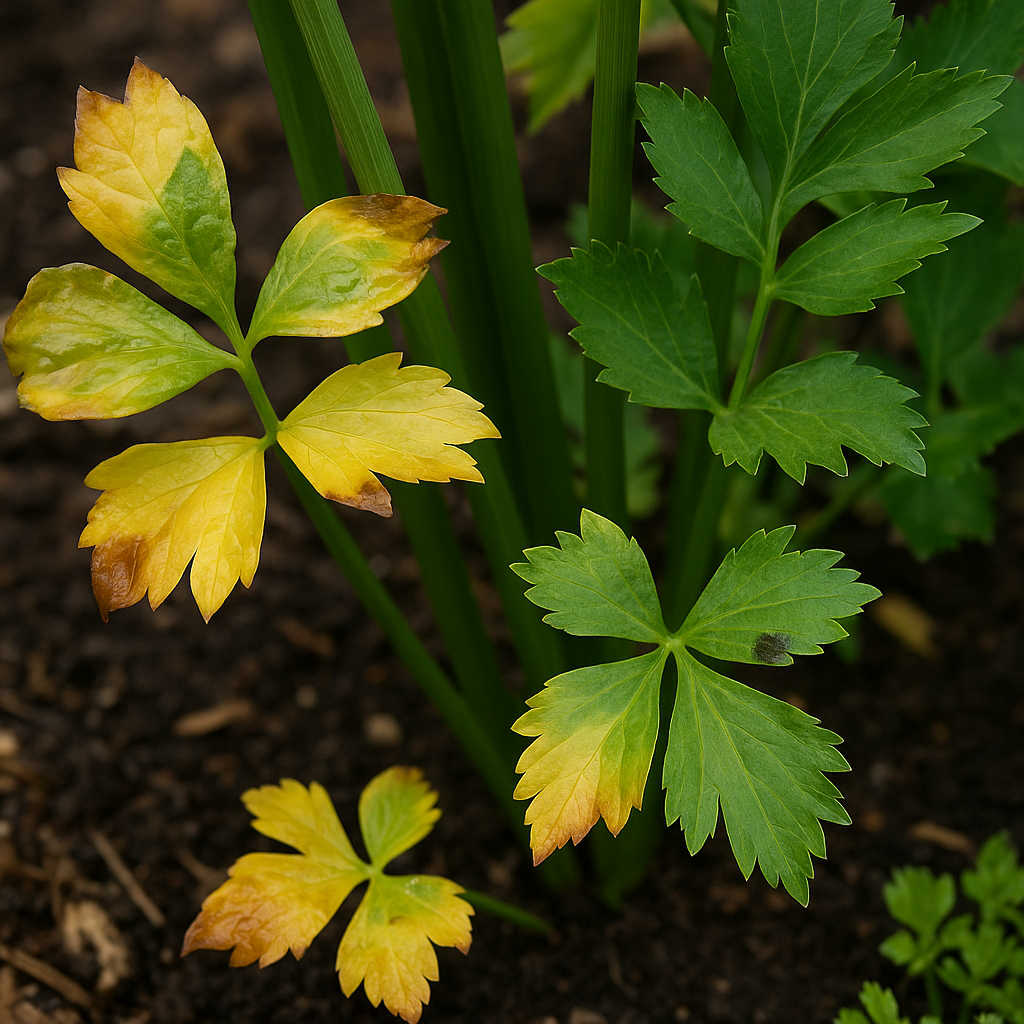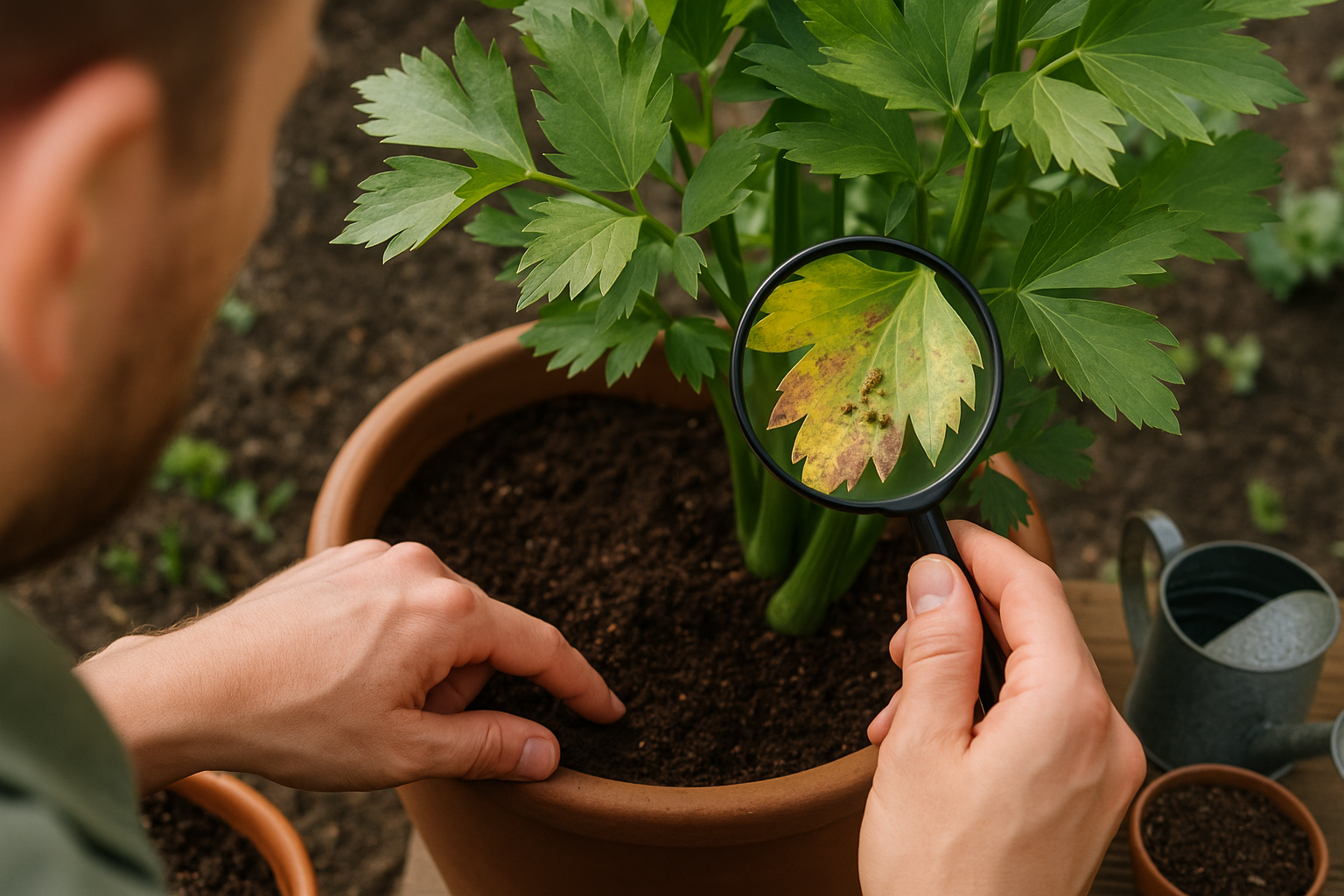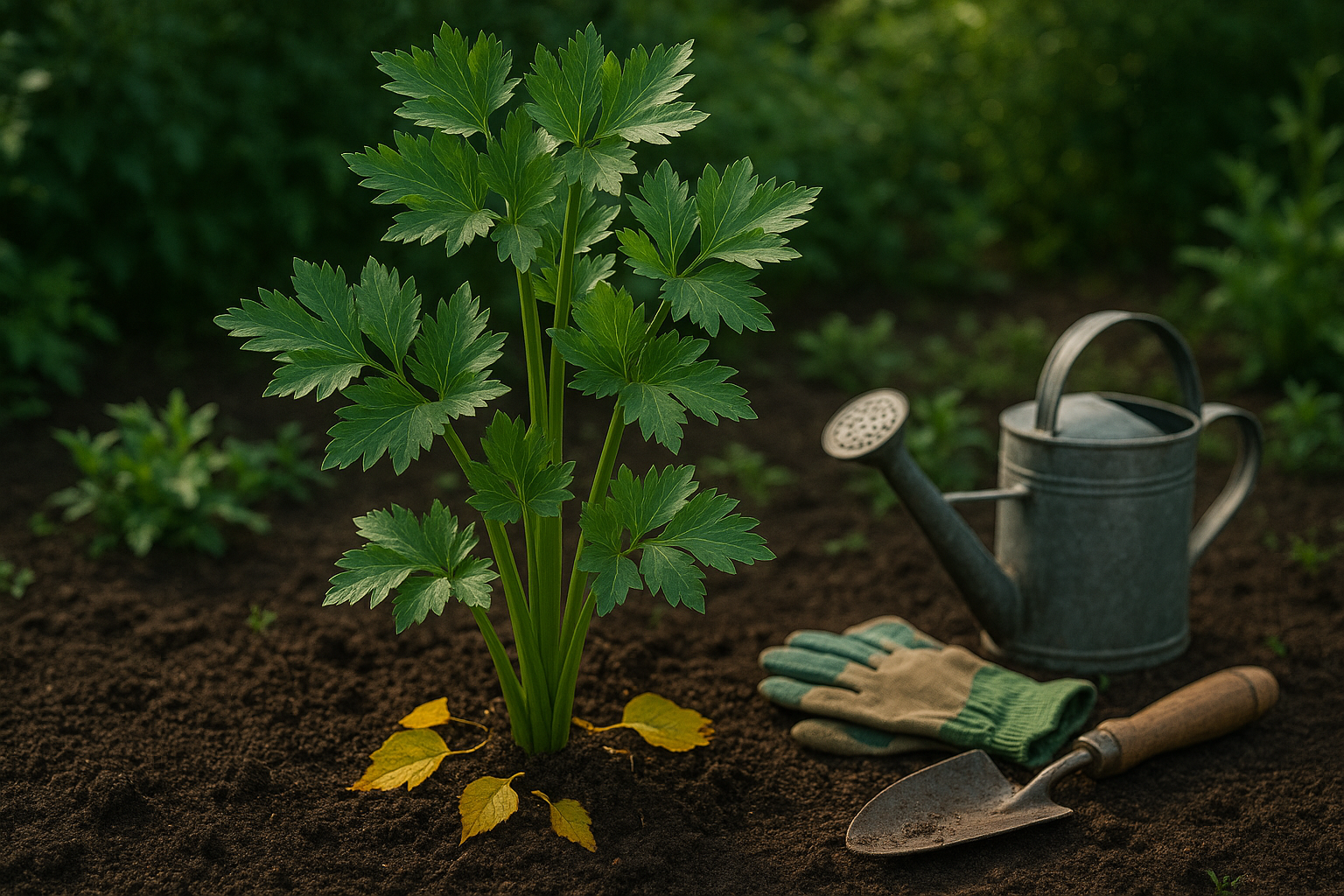Common Causes of Yellow Lovage Leaves

Yellowing leaves on lovage often indicate that something is off with your plant’s environment or care routine. Figuring out the cause starts with closely observing the symptoms. Overwatering is a common issue; lovage prefers consistent moisture, but soggy soil can suffocate roots, leading to yellow leaves that feel soft or mushy, sometimes accompanied by a wilting appearance.
In contrast, underwatering causes leaves to turn yellow and crispy, usually starting at the edges, with the plant appearing limp and thirsty overall. Lack of sunlight can also be a factor—lovage thrives in partial to full sun. Plants kept in the shade may develop pale, yellow leaves and elongated stems as they stretch toward any available light.
Nutrient deficiencies, especially nitrogen, magnesium, or iron, typically present as uniform yellowing on older leaves. In the case of iron deficiency, you might see yellowing between the veins of younger leaves while the veins themselves remain green.
Diseases such as root rot (often due to poor drainage) or fungal leaf spots cause yellowed areas sometimes dotted with brown or black spots. Affected leaves may drop prematurely. Pest damage from aphids or spider mites can also stress the plant. Pests might be visible on the undersides of yellowing, speckled leaves, sometimes leaving behind a sticky residue or fine webbing.
Lastly, natural aging causes lower, older leaves to yellow and die off as the plant redirects energy to new growth. These leaves can be safely trimmed if the rest of the plant is healthy.
By carefully examining the pattern, location, and texture of yellowing—along with any accompanying signs like wilting, spots, or pests—you can better pinpoint what your lovage needs and adjust your care routine to keep it healthier and greener.
Diagnosing the Problem

Diagnosing yellowing leaves starts with an easy step-by-step checklist to help you quickly pinpoint the cause. Begin by checking the soil: stick your finger about an inch deep to see if it feels dry or soggy—over- or under-watering are the most common culprits behind yellow leaves.
Next, examine the leaves themselves for any unusual spots, edges, or patterns. Brown tips or crispy patches often signal stress from too much sun or fertilizer, while dark or mushy spots might indicate fungal or bacterial disease.
If you notice wilting along with yellowing, suspect root issues or insufficient watering. Also, scan for pests such as tiny bugs or sticky residue on leaves, since infestations can quickly cause leaves to yellow.
Don’t forget to consider temperature fluctuations or drafts, especially if you recently moved your plant, as this can shock sensitive species.
Remember, sometimes yellowing results from a combination of factors—maybe dry air paired with a minor pest issue, or slight over-watering combined with nutrient deficiency. Take note of all symptoms together rather than focusing on just one, since overlapping problems are common, especially in houseplants or container gardens.
By methodically checking each possible cause—soil, leaves, environment, and pests—you can often narrow down the root issue. If the yellowing persists after making adjustments, consider repotting or seeking expert advice, as there could be underlying problems like compacted roots or hidden diseases.
This practical, stepwise approach saves time and keeps plant care stress-free.
Effective Solutions and Quick Fixes
If your plant is looking unhappy, quick fixes and effective solutions can make a big difference. First, check your watering routine—overwatering and underwatering are the most common culprits. Stick your finger into the soil; if it’s soggy or bone dry, adjust accordingly by letting it dry out a bit or watering more frequently.
For poor soil, work in organic matter like compost to boost nutrients and drainage. If a plant seems stunted or scorched, try moving it to a better spot with the right light—sun-loving varieties need bright, direct rays, while shade lovers thrive out of the midday heat.
For sudden pest outbreaks, start by removing insects by hand or spraying with a gentle, soapy water solution. Avoid reaching for harsh chemicals right away, as they can harm beneficial bugs and your plants’ health.
Yellowing leaves or weak growth? Don’t be tempted to over-fertilize—this can burn roots and make problems worse. Instead, use a slow-release, balanced fertilizer or focus on improving soil health in the long run.
Remember, most plant problems respond well to early intervention, so keep a close eye on changes and act quickly. In the big picture, consistent care, observation, and small adjustments keep your plants thriving while preventing issues before they start.
Adjusting habits and environments, rather than relying on quick chemical fixes, is always the healthiest path for both your green friends and the environment.
Ongoing Lovage Care to Prevent Yellowing
Keeping your lovage plants healthy and green year-round starts with smart, consistent care. Water your lovage when the top inch of soil feels dry—deep soakings once or twice a week prevent the roots from sitting in soggy soil, which often causes yellowing.
Lovage loves sunlight, so choose a spot that receives at least six hours of sun each day; in extremely hot regions, provide afternoon shade to prevent scorching.
Soil quality is key for reducing stress on your plants: opt for well-draining, fertile soil rich in organic matter. Mixing compost into the planting area every spring gives your lovage a nutrient boost and helps retain moisture.
Mulching with a two-inch layer of straw or leaf mold keeps the soil cool, suppresses weeds, and reduces water loss—especially important in summer.
During autumn, cut back fading stems to regenerate healthy foliage and keep beds tidy to minimize pests and disease. In winter, mulch more heavily to protect the roots from frost.
By following these straightforward maintenance habits, you’ll catch early signs of trouble and address imbalances before they cause yellowing, ensuring a lush, vibrant lovage patch through every season.
When Yellow Leaves Are Not a Problem
It’s completely normal for older leaves on many plants to turn yellow and drop off as part of their natural life cycle, especially as the seasons change. For example, trees like maples and shrubs like hydrangeas shed older, tired leaves in the fall, making way for new growth in the spring. Indoor plants such as peace lilies or pothos may also lose a few bottom leaves over time, even when they’re healthy.
This kind of yellowing is usually uniform, starting with the oldest leaves and not spreading rapidly to new growth. The real red flags are when yellowing is patchy, sudden, or affects younger foliage—this could signal nutrient deficiencies, overwatering, pests, or disease.
If your plant’s yellow leaves are limited to the oldest parts and the rest looks lush and healthy, there’s no need to worry. Feel free to gently prune off these leaves to tidy up your plant; it won’t cause harm and can even help redirect energy to healthy new growth.
Remember, some yellowing is just nature’s way of keeping your plant refreshed and beautiful, so don’t panic if you see a golden leaf or two!
